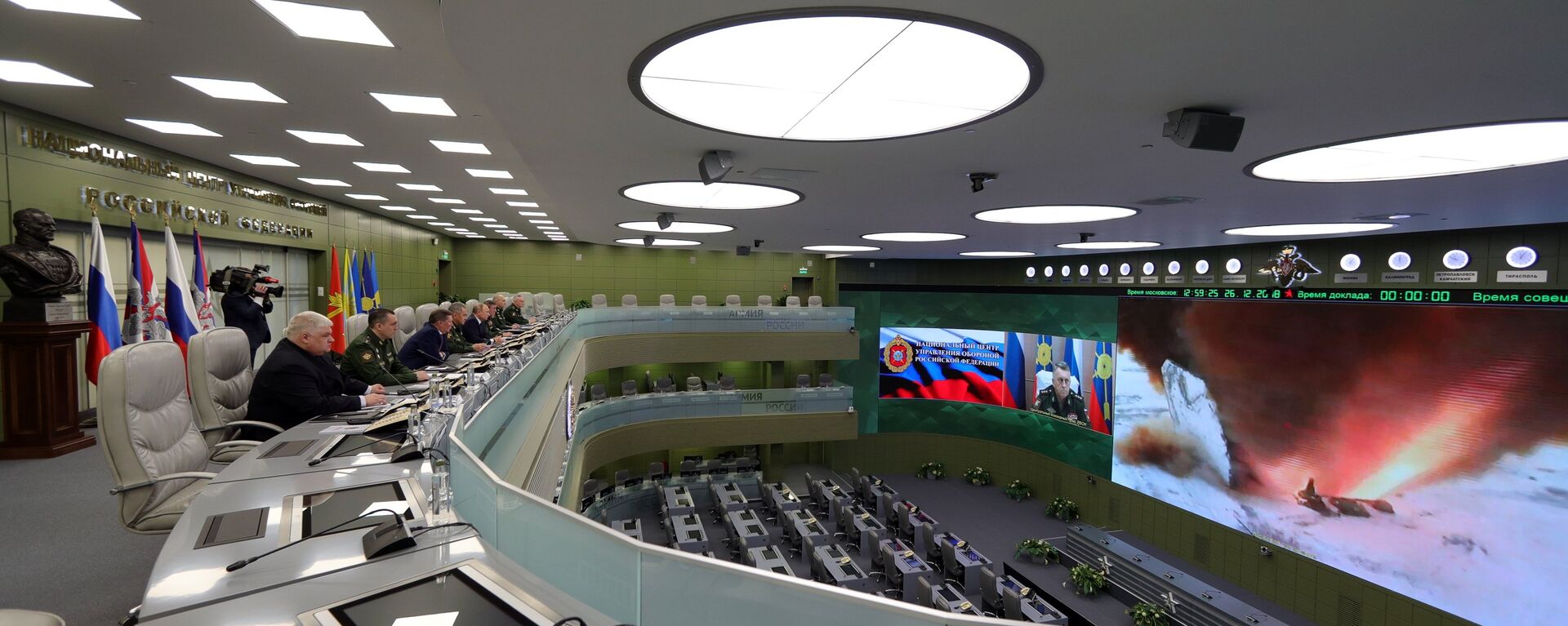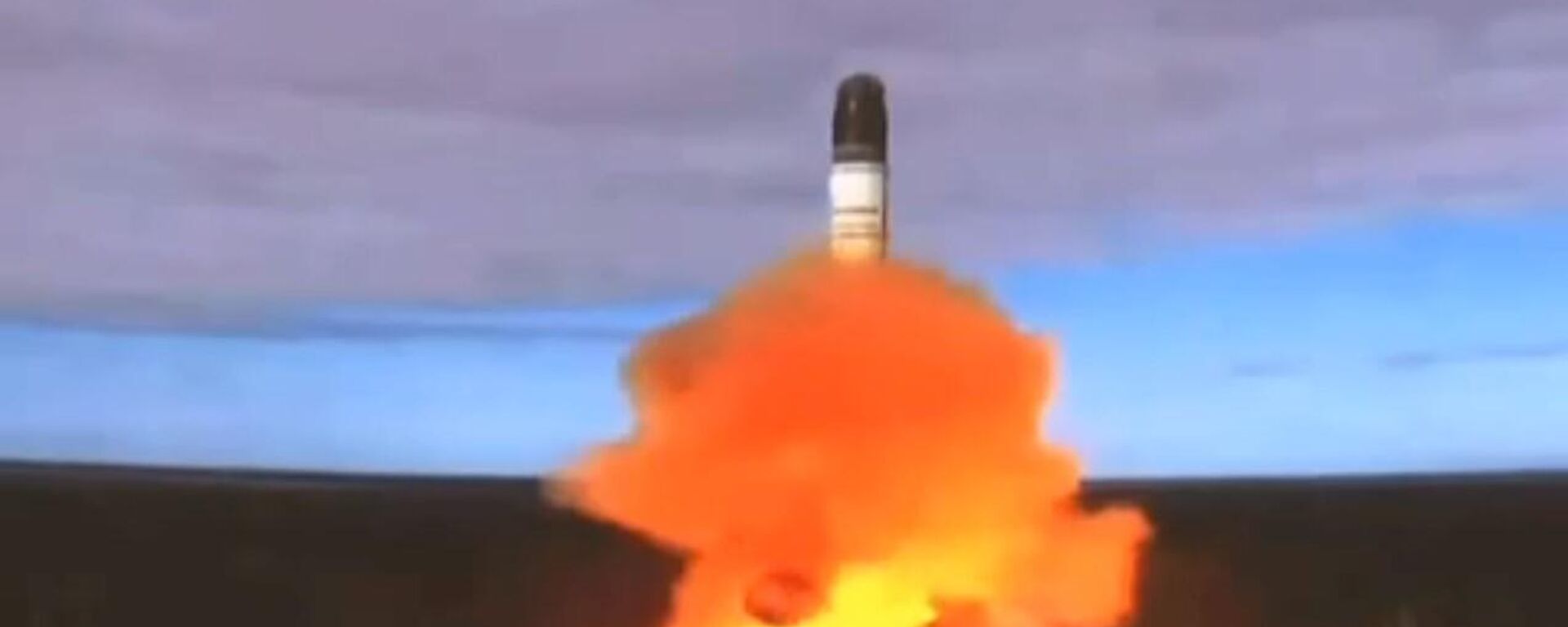https://sputnikglobe.com/20220712/worlds-largest-missile-being-prepared-for-new-tests-in-russia-1097237338.html
World’s Largest Missile Being Prepared for New Tests in Russia
World’s Largest Missile Being Prepared for New Tests in Russia
Sputnik International
Named after the Sarmatian people of ancient times who populated the Eurasian Steppe, the RS-28 Sarmat is Russia’s next-gen nuclear-capable and multiple... 12.07.2022, Sputnik International
2022-07-12T14:08+0000
2022-07-12T14:08+0000
2022-07-12T14:34+0000
rs-28 sarmat intercontinental ballistic missile
testing
production
dmitry rogozin
https://cdn1.img.sputnikglobe.com/img/07e6/07/0c/1097237173_316:487:3091:2048_1920x0_80_0_0_9540ee73b9ac9aca1eb1cfb79fa17f34.jpg
Russia’s Sarmat ICBM is being prepared for new tests, Roscosmos chief Dmitry Rogozin has announced.“The most powerful global-range nuclear missile in the world is being prepared for new testing and serial production,” Rogozin wrote in a Telegram post Tuesday.The Russian space agency chief accompanied the post with a photo of himself and other Roscosmos officials and rocket engineers standing alongside a Sarmat being transported by railroad car at an undisclosed location.President Vladimir Putin announced last month that Russia’s nuclear forces would be receiving their first batch of Sarmats by the end of 2022. Roscosmos plans to build a total of 46 of ICBMs.The first successful test launch of the missile, which can change trajectory and maneuver while in flight to evade complex missile defenses, was conducted in April.The Sarmat has been under development since the late 2000s, with the Makeyev Rocket Design Bureau tasked with creating a new nuclear-capable and MIRV-equipped rocket to eventually replace the Soviet-designed RS-36M2 Voevoda ICBMs (NATO reporting name "SS-18 Satan") which currently provide Russia with strategic parity with the US and its allies France and Britain.Russian Strategic Missile Forces deputy commander Sergei Poroskun recently indicated that he expects the Sarmat to serve as a key component in Russia’s deterrent force for at least half a century.Along with its maneuverability characteristics and in addition to its ability to carry 10-15 traditional nuclear reentry vehicles, the 208-ton missile is designed to carry Avangard hypersonic glide vehicles, adding to its evasive and strike characteristics.The Sarmat is one of several new strategic weapons systems created by Russian military designs bureaus since the US’ fateful 2002 decision to rip up the 1972 Anti-Ballistic Missile Treaty, which set prohibitions on the creation of advanced missile defenses to ensure that the nuclear superpowers enjoyed strategic parity, hence reducing the risk of a nuclear war or a costly missile arms race.Russia’s development of a new generation of strategic strike weapons has also been tied in part to Pentagon planners’ work on a concept known as "Prompt Global Strike" – the idea of decapitating Russia’s leadership and nuclear potential using a massed precision-guided conventional missile attack, and shooting down whatever Russian nuclear missiles manage to be launched using a new generation of missile defense systems. The creation of weapons like the Sarmat and the Avangard is meant to assure that no matter what missile defense systems an adversary creates, some nukes will get through, thereby discouraging the folly of initiating a "Prompt Global Strike"-style attack against Russia in the first place.Russia’s nuclear doctrine forbids the use of nuclear weapons for aggressive purposes, with such weapons authorized for use only in the event of an enemy nuclear strike, or an act of conventional aggression so severe that it is deemed to threaten the existence of the Russian state.Last month, amid Russian, Chinese, and even North Korean advances in advanced nuclear weapons delivery systems, United States Northern Command and North American Aerospace Defense Command chief Glen D. VanHerck warned that his “ability to conduct missions…has eroded and continues to erode.”
https://sputnikglobe.com/20220420/russia-successfully-launches-icbm-sarmat-from-plesetsk-spaceport-defence-ministry-says-1094917026.html
https://sputnikglobe.com/20211013/putin-says-global-arms-race-has-accelerated-thanks-to-us-withdrawal-from-abm-treaty-1089892648.html
Sputnik International
feedback@sputniknews.com
+74956456601
MIA „Rossiya Segodnya“
2022
News
en_EN
Sputnik International
feedback@sputniknews.com
+74956456601
MIA „Rossiya Segodnya“
Sputnik International
feedback@sputniknews.com
+74956456601
MIA „Rossiya Segodnya“
rs-28 sarmat intercontinental ballistic missile, testing, production, dmitry rogozin
rs-28 sarmat intercontinental ballistic missile, testing, production, dmitry rogozin
World’s Largest Missile Being Prepared for New Tests in Russia
14:08 GMT 12.07.2022 (Updated: 14:34 GMT 12.07.2022) Named after the Sarmatian people of ancient times who populated the Eurasian Steppe, the RS-28 Sarmat is Russia’s next-gen nuclear-capable and multiple independent reentry vehicle (MIRV)-equipped super-heavy intercontinental ballistic missile, designed to ensure Russian strategic parity with the United States and its allies for decades to come.
Russia’s Sarmat ICBM is being prepared for new tests, Roscosmos chief Dmitry Rogozin has announced.
“The most powerful global-range nuclear missile in the world is being prepared for new testing and serial production,” Rogozin wrote in a Telegram post Tuesday.
The Russian space agency chief accompanied the post with a photo of himself and other Roscosmos officials and rocket engineers standing alongside a Sarmat being transported by railroad car at an undisclosed location.
President Vladimir Putin announced last month that Russia’s nuclear forces would be receiving their first batch of Sarmats
by the end of 2022. Roscosmos plans to build a total of 46 of ICBMs.
The first successful test launch of the missile, which can change trajectory and maneuver while in flight to evade complex missile defenses, was conducted in April.
The Sarmat has been under development since the late 2000s, with the Makeyev Rocket Design Bureau tasked with creating a new nuclear-capable and MIRV-equipped rocket to eventually replace the Soviet-designed RS-36M2 Voevoda ICBMs (NATO reporting name "SS-18 Satan") which currently provide Russia with strategic parity with the US and its allies France and Britain.
Russian Strategic Missile Forces deputy commander Sergei Poroskun recently indicated that he expects the Sarmat to serve as a key component in Russia’s deterrent force for at least half a century.
Along with its
maneuverability characteristics and in addition to its ability to carry 10-15 traditional nuclear reentry vehicles, the 208-ton missile is
designed to carry Avangard hypersonic glide vehicles, adding to its evasive and strike characteristics.
The Sarmat is one of several new strategic weapons systems created by Russian military designs bureaus since the US’ fateful 2002 decision to rip up the 1972 Anti-Ballistic Missile Treaty, which set prohibitions on the creation of advanced missile defenses to ensure that the nuclear superpowers enjoyed strategic parity, hence reducing the risk of a nuclear war or a costly missile arms race.
Russia’s development of a new generation of strategic strike weapons has also been tied in part to Pentagon planners’ work on a concept known as "Prompt Global Strike" – the idea of decapitating Russia’s leadership and nuclear potential using a massed precision-guided conventional missile attack, and shooting down whatever Russian nuclear missiles manage to be launched using a new generation of missile defense systems. The creation of weapons like the Sarmat and the Avangard is meant to assure that no matter what missile defense systems an adversary creates, some nukes will get through, thereby discouraging the folly of initiating a "Prompt Global Strike"-style attack against Russia in the first place.

13 October 2021, 13:26 GMT
Russia’s nuclear doctrine
forbids the use of nuclear weapons for aggressive purposes, with such weapons authorized for use only in the event of an enemy nuclear strike, or an act of conventional aggression so severe that it is deemed to threaten the existence of the Russian state.
Last month, amid Russian, Chinese, and even North Korean advances in advanced nuclear weapons delivery systems, United States Northern Command and North American Aerospace Defense Command chief Glen D. VanHerck
warned that his “ability to conduct missions…has eroded and continues to erode.”



